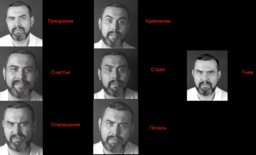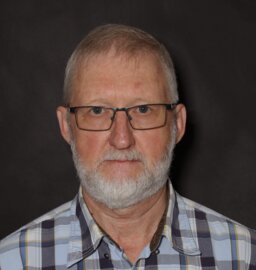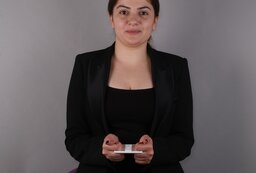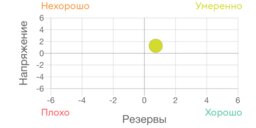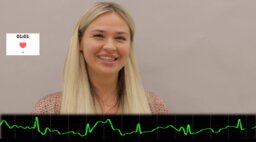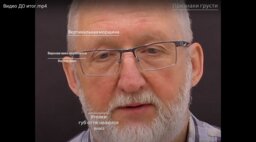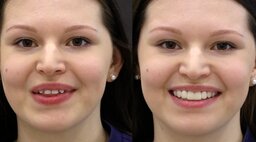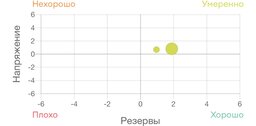DOI:
10.37988/1811-153X_2021_4_106Emotional aspects of complex rehabilitation of dental patients
Downloads
Abstract
This article describes the rationale for involving a musical component in the form of patient singing in the protocol of primary consultation for planning dental treatment, using modern computer technologies.Materials and methods.
The study involved 46 patients who applied for comprehensive dental rehabilitation. The patients were divided into two equal groups — the main group and the control group. In the study group, the singing element was included in the patients of the main group at the initial consultation during the video protocol. The functional state of the patients was assessed by measuring blood pressure and heart rate before and after the consultation. Video recordings of the conversation with the patient were analyzed by psychologists who recorded the manifestations of the main emotions. The level of tension and stress was determined using the Engy Beat device (Russia). The analysis was carried out according to the indicators of the stress index and the Bayevsky diagram, displaying tension on one axis, on the second — the reserve forces of the body to restore the psycho-emotional state of the body. Results and discussion. According to the results of the study of the stress level in the body, in patients of the main group at the time of singing, its level decreased sharply. With the initial stress index value of 344.0±41.3 in the main group and 320±35.15 in the comparison group, after the consultation, this indicator decreased to 55.0±11.2 and 220.0±31.3, respectively. A similar positive dynamics was observed when analyzing the results of measuring physiological conditions, in the form of a decrease in heart rate in the main group from 82.00±10.15 to 70.00±11.70. All 23 patients of the main group stayed for long-term treatment at the clinic and came to the appointments in a good mood until the end of dental rehabilitation. This gives every reason to draw conclusions about the expediency of including elements of patients’ singing in the adaptation stage of the initial consultation.
Key words:
digital planning, digital dentistry, emotions, stress level, psycho-emotional tension, Bayevsky diagramFor Citation
Introduction
From ancient times, researchers devoted to medicine, noted a correlation between the predominate emotional state and well-being of an individual. This is described in the treatises on Chinese traditional medicine, in the works of Hippocrates and other ancient Greek scientists. We cannot overestimate the value of emotions, as are the part of all human activities, and have an influence on individual and social awareness and perception [1].
Emotions of an individual are reflected on the face, in the posture, gait, movements and voice. An individual perceives the around him from the emotional perspective. We can perceive the same event both with positive and negative emotions. Recently experienced emotions have a direct influence on the decisions and following actions of an individual [2, 3].
Negative emotions, for example, resentment, cause aggression, reinforced by norepinephrine (adrenal hormone). A sense of danger causes fear, reinforced by epinephrine, and the appearance of a contestant or a competitor makes an individual jealous and envious [4, 5]. Regular anxiety aggravates common controlled emotions: in first case aggression transforms into hate, second — into fear and anxiety (victim state), in third case — into dissatisfaction. Negative emotions also include excessive joy — it leads to energy scattering and wasting. Continuous losses force an individual to seek for new pleasures, which he cannot sustain. It is a vicious circle. In this case, a human always seeks for amusement, which leads to anxiety (a fear to lose access to the desired subject), insomnia and despair [6—8].
Positive emotions are accompanied by a release of “happy hormones” endorphins, dopamine. They cause euphoria, which additionally improves individual's efforts to obtain pleasure and tranquility again. Serotonin has similar mechanism of action: its blood concentration correlates with the pain threshold and physical factors tolerance (it causes children to quickly forget injuries or to ignore obvious lesions, such as cuts, tears etc. for a long time).
Any positive emotion improves nervous system performance, quality of sleep, stabilizes emotional state, stimulates release of the endorphins, and provides beneficial effect on the hormonal background. The more positive emotions individual perceives the less is a risk of stress and various diseases [9, 10].
Emotions cause the most significant effect on the social interaction between individuals (social management). When we communicate with other people, we tend to interact more with a cheerful and tranquil person. These are features of attractive individuals — cheerfulness, tranquility, self-confidence. Mentally and emotionally healthy individuals do not enjoy communication with anxious, depressed or angry person [11].
Darvin (1872) claimed that specific emotional expressions are congenital, and they are inherent for all humans. His evidence and arguments were mostly ignored by scientist of the next century. Instead, the hypothesis that the facial expression is not a reliable indicator of emotions was taken for granted, despite the contradictory evidence (Bruner & Tagiuri, 1954). Eckman, Frizen & Ellwort (1972, 1982) solved this contradiction decisively, indicating the methodological problems that have confused other investigators. They showed that the investigators should come to a consensus on the indication of the stage and spontaneous facial expressions from the perspective of the emotional categories and emotional size.
Every emotion is realized by a set of similar facial expressions. For example, emotions from the anger group vary in the intensity from the irritation to intense fury. This group also includes such variations asvindictiveness, vengefulness and surliness. These emotions from the anger group are reflected in the anger expressions, related to some extent with the general prototype of the expression of this emotion [12].
At a dentistry clinic most people experience significant stress [13 — 17]. At the initial visit a dentist faces significant challenge — enable psychoemotional adaptation of a patient to the planned procedure [18].
Development of the state-of-art digital technologies: obtaining non-contact dental impressions and dentitions using oral scanner, virtual dental treatment planning, production of high-precision dental prostheses, allowing to avoid intraoral correction have not only improved the quality of dental care but also significantly reduced the fear of dental procedures [19, 20].
A number of authors develop specific digital dental treatment protocols and demonstrate their clinical efficacy. As a rule, each described protocol includes photo and video registration of the state of the dentoalveolar system, face shape and smile, patient's appearance and posture [21, 22].
In recent years many clinics use music to reduce psychoemotional stress during initial dentist consultation [23].
Involvement of a patient into a “musical process”, in particular during the video recording at the initial visit, has several benefits. First, singing activates a maximum number of facial muscles, which allows specialists to detect and analyze the possible deviations in dentoalveolar system more deeply, and to to plan future aesthetic rehabilitation more precisely. Second, music has an extremely beneficial effect on the patient's psychoemotional state, which was demonstrated by a number of authors in clinical studies. At the same time, singing is a very intimate process for every individual. Sometimes it is very hard to relax and overcome the complexes to allow one singing before strangers. But when a patient liberates, some kind of interconnection is formed between himself and a dentist.
According to a classification of a famous American psychologist and a specialist in the emotional psychology Paul Ekman, there are 7 basic emotions: contempt, anger, surprise, disgust, enjoyment, fear, and sadness (Fig. 1) [24].
Thus, during consultation it is very important to analyze behavior and psychoemotional state of a patient.
Objectives — to assess the effect of musical elements in the process of dental treatment planning on the psychoemotional and physiological state of a patient, as well as on the level of the experienced stress.
Materials and methods
In cooperation with clinical psychologists we have studied 46 patients to assess physiognomy, emotional expressions and a level of stress in individuals with and without the use of musical elements in the treatment process. All patients were randomized into two groups — study and control. In the study group, a singing element was included at the video registration phase of the initial consultation. The patients could chose any song and sing it with a backing track. To assess the functional state of the patients, we have measured blood pressure and heart rate before and after consultation.
Psychologists analyzed the video records of a conversation with a patient and registered the expression of the basic emotions (Fig. 2).
Emotions were assessed and registered in accordance with Ekman's guidelines:
- Contempt — raised corner of the moth on one side;
- enjoyment — small wrinkles in the corners of the eyes, cheeks are slightly raised, paraorbital muscles are contracted;
- disgust — wrinkled face, upper lip is raised;
- surprise — eyebrows are raised, eyes are wide open, mouth is slightly open;
- fear — eyebrows are raised and elongated, upper eyelids are raised, lower are strained, lips are slightly extended;
- sadness — slightly lowered eyelids, absent look, the corners of the mouth are lowered;
- anger — eyebrows are lowered, knit, gleam in the eyes, the mouth is open, lips are narrowed.
Second important study objective was to assess the physiological state of patients: heart rate, tension and stress level. For this purpose, we have used a Russian invention — Engy Beat (Health Measurement LLC, Moscow, Russia) and its software — Engy Health cloud platform for parameter analysis, as well as mobile app (Fig. 3). Engy Beat is an ultra-precise pulsometer for heart rhythm registration. Next, Engy Health mobile app processes the obtained data to assess the state and performance of the whole body.
The main element in the Engy Health mobile app operation is a Baevsky's diagram — a health map where the reserves and the level of stress experienced by a body to maintain health act as coordinates. Based on the measurement results, the coordinates of the spot and the color of the field in which it falls are calculated. These data show the body's ability to tolerate stress and loads [25].
The increase in heart rate from 90 to 150—180 beats per minute in healthy individuals occurs after physical load and emotional stress. This phenomenon is called sinus tachycardia. Reduction in heart rate to 59—40 with regular sinus rhythm is called sinus bradycardia. Among healthy individuals, such changes are often registered in athletes. Mathematical analysis of the heart rate allows to translate biological processes into digital and mathematical language. We have investigated thee main characteristics of the patients' body: complex, spectral and temporal.
As a result, the analysis was conducted based on the stress index and Baevsky's diagram with one axis indicating a stress level and another — the power of the body to restore psychoemotional state.
Stress is a non-specific response of the body to any external effect, which is based on the non-specific need to adapt and restore homeostasis. Stress level is an extent of physical and mental tension in response to pooled stress-inducing factors at the moment.
Stress level was assessed using Engy Health pulsometer:
- 0 to 20 — very low stress level indicating the lack of response to stress;
- 20 to120 — normal level;
- 120 to 200 — moderate level;
- 200 to 500 — significant level;
- 500 to 800 — critical level.
Values according to the Baevsky's diagram were interpreted in accordance with the color coding system for the spot on the coordinate system (Fig. 4).
All patients in the main group sang their favorite compositions at the initial consultations. After the initial consultation, patients of the control group immediately proceeded to the dental treatment (Fig. 5).
Results and discussion
According to the physiognomy analysis data, 34 patients had anxiety. They have had distinct signs of tension and sadness during the initial visit (Fig. 6).
A change in emotions in patients seeing themselves with aesthetic and healthy smile that they will obtain in the nearest future was especially clear. A rapid change in the appearance provides a lot of positive emotions (Fig. 7).
Also, stress level data showed a dramatic reduction in this indicator in the patients of the main group during singing. Thus, after consultation, the level of stress in the main and control groups have decreased from 344.0±41.3 and 320.0±35.15 to 55.0±11.2 and 220.0±31.3, respectively. The favorite music helped patients to feel themselves in a familiar environment, which ensures reliable stress reduction.
The heart rate for assessment of the functional state of patients was calculated before, during and after consultation. Thus, in the study group, a reduction in heart rate was noted from 79.0±9.4 to 62.0±7.9 with a trend towards statistical significance; in the patients of the comparison group, the value before consultation was 82.0±10.2, with a reduction to 70±11.7 by the end of the visit.
Blood pressure for assessment of the patients' functional state was also measured before, during and after the consultation.
Baevsky's index in all patients of the main group was within “good” and “moderate” values. In the control group, data were as follows: “bad” — in 8 patients, “poor” — in 12 patients, and only 3 patients had “moderate” result (Fig. 8). It should be noted that these 3 patients gave consent for treatment at the clinic, and their parameters significantly improved.
After the initial consultation patients of the main and control groups underwent dental treatment of varying extent of intervention. All 23 patients of the main group continued treatment at the clinic and attended visits in good mood throughout the whole follow-up period. There were no conflicting or controversial situations during treatment. Patients of the main group undergoing orthopaedic dental rehabilitation were fully agree with the physicians in the choice of the form, size and color of future restorations.
4 of 23 patients in the control group refused the proposed treatment plan and did not arrange the second appointment after the initial consultation. Six patients in control group were not satisfied with the 2D and 3D-design of the future smile proposed by a doctor. Eight patients questioned the color of the future orthopaedic constructions. One patient in the control group refused further treatment at the stage of temporary prosthesis construction due to the high cost of the final ceramic dentures.
Conclusion
Data of the study of a level of stress of a patient during conversation and singing indicated a significant reduction of the stress in all patients of the study group. This allows to consider the inclusion of patients' singing into the adaptation stage of the initial visit reasonable. Taking into account the study of emotions, internal stress level and expression thereof in patients, we can make a conclusion that during the initial consultation, a dentist can both correct patient's physical state and also use these data to provide a favorable environment for the further treatment, as the patients' favorite music improves the personal interaction with the dentist and has a significant effect on the patient's compliance. This, in turn, improves the treatment efficacy and prevents conflict situations.
References
- Keltner D., Ekman P. Emotion: An overview. In: Kazdin A.E. (ed.) Encyclopedia of Psychology. Vol. 3. American Psychological Association, 2000. Pp. 162—167. DOI: 10.1037/10518-062
- Rosenberg E.L., Ekman P., Jiang W., Babyak M., Coleman R.E., Hanson M., O.’Connor C., Waugh R., Blumenthal J.A. Linkages between facial expressions of anger and transient myocardial ischemia in men with coronary artery disease. Emotion. 2001; 1 (2): 107—15. PMID: 12899191
- Fredrickson B.L., Losada M.F. Positive affect and the complex dynamics of human flourishing. Am Psychol. 2005; 60 (7): 678—86. PMID: 16221001
- Anisimova E.N., Zinoviev I.A., Anisimova N.Yu., Golikova A.M. Development and application of a psychological method for correcting anxiety in pregnant women at an outpatient dental appointment. Dentist (Minsk). 2021; 1 (40): 58—62 (In Russ.). eLIBRARY ID: 44878326
- Mast M.S. On the importance of nonverbal communication in the physician-patient interaction. Patient Educ Couns. 2007; 67 (3): 315—8. PMID: 17478072
- Mast M.S., Hall J.A., Köckner C., Choi E. Physician gender affects how physician nonverbal behavior is related to patient satisfaction. Med Care. 2008; 46 (12): 1212—8. PMID: 19300310
- Roter D.L., Frankel R.M., Hall J.A., Sluyter D. The expression of emotion through nonverbal behavior in medical visits. Mechanisms and outcomes. J Gen Intern Med. 2006; 21 Suppl 1: S28—34. PMID: 16405706
- Starikova I.V., Radyshevskaya T.N., Bobrov D.S., Tamazyan N.G. The level of anxiety and some indicators of hemodynamics in dental patients. Modern problems of science and education. 2019; 2 (In Russ.). eLIBRARY. ID: 37395187.
- Rolfe A., Cash-Gibson L., Car J., Sheikh A., McKinstry B. Interventions for improving patients› trust in doctors and groups of doctors. Cochrane Database Syst Rev. 2014; 3: CD004134. PMID: 24590693
- Anisimova E.N., Gasanova Z.M., Molchanov A.S., Ryazantsev N.A. Psychological method of correction of fear and anxiety before dental interventions. Endodontics today. 2012; 1: 31—5 (In Russ.). eLIBRARY ID: 17657156.
- Yerilin E.A., Anisimova E.N., Anisimova N.Yu. Methods of assessing the psychoemotional state of patients in the conditions of outpatient dental admission. Journal of New Medical Technologies, EEdition. 2016; 2: 124—130 (In Russ.). eLIBRARY ID: 26423857.
- Ekman P. Are there basic emotions? Psychol Rev. 1992; 99 (3): 550—3. PMID: 1344638
- Anisimova N.Yu. Patients with dentophobia at a dental appointment. Tomsk State Pedagogical University Bulletin. 2014; 5 (146): 123—8 (In Russ.). eLIBRARY ID: 21570996
- Kruchinin V.Yu. Changes in the psychoemotional state of patients against the background of dental treatment. International Journal of Applied and Fundamental Research. 2014; 7: 50—2 (In Russ.). eLIBRARY ID: 21610120
- Mitin N.E., Rodina T.S., Guskov A.V., Yudin A.V. Study of the psychoemotional state of patients at a dental appointment. Clinical Dentistry (Russia). 2018; 4 (88): 80—2(In Russ.). eLIBRARY ID: 36517626
- Boyko V.V. Physical discomfort at a dental appointment: forms, identification, overcoming. Saint-Petersburg: Madame, 2003. 77 p. (In Russ.). eLIBRARY ID: 19532986
- Akarachkova E.S. Features of modern anti-anxiety therapy in somatic patients. Terra Medica Nova. 2006; 3 (43): 29—31 (In Russ.). eLIBRARY ID: 16370615.
- Yfantopoulos J., Protopapa M., Chantzaras A., Yfantopoulos P. Doctors’ views and strategies to improve patients’ adherence to medication. Hormones (Athens). 2021; 20 (3): 603—611. PMID: 33914291
- Coachman C., Calamita M.A., Sesma N. Dynamic Documentation of the Smile and the 2D/3D Digital Smile Design Process. Int J Periodontics Restorative Dent. 2017; 37 (2): 183—193. PMID: 28196157
- Apresyan S.V., Stepanov A.G., Vardanyan B.A. Digital protocol for comprehensive planning of dental treatment. Clinical case analysis. Stomatology. 2021; 100 (3): 65—71 (In Russ.). eLIBRARY ID: 46222733.
- Apresyan S.V., Stepanov A.G., Retinskaya M.V., Suonio V.K. Evaluation of functional potential of CAD-programs in integrated digital planning of dental treatment. Russian Journal of Dentistry. 2020; 24 (3): 135—140 (In Russ.). eLIBRARY ID: 44005658
- Apresyan S.V., Suonio V.K., Stepanov A.G., Kovalskaya T.V. Evaluation of functional potential of CAD-programs in integrated digital planning of dental treatment. Russian Journal of Dentistry. 2020; 24 (3): 131—4 (In Russ.). eLIBRARY ID: 44005657
- Letunova N.Yu. Features of using the method of motivational interviewing in patients with dentophobia in outpatient practice. The Russian Archives of Internal Medicine. 2016; 1 (6): 119 (In Russ.). eLIBRARY ID: 25910249
- Ekman P. Basic Emotions. In: Dalgleish T., Power M.J. (eds.) Handbook of Cognition and Emotion. John Wiley & Sons, 1999. Pp. 45 60. DOI: 10.1002/0470013494.ch3
- Baevsky R.M., Ivanov G.G. Heart rate variability: theoretical aspects and possibilities of clinical application. Ultrasound and functional diagnostics. 2001; 3: 106—27 (In Russ.). eLIBRARY ID: 25990135
